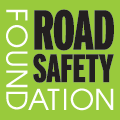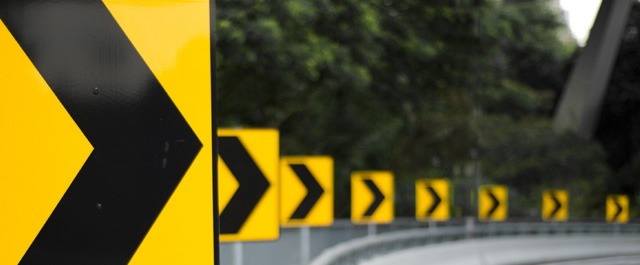GB EURORAP RESULTS 2010: SAVING LIVES FOR LESS
Britain’s finances may be exhausted but savings in the cost of road crashes costing 1.5% of GDP and worth £18bn annually are readily achievable. The high costs of emergency services, hospitals and long term care for the disabled can often be avoided through little more than the cost of a pot of paint, according to the annual road tracking survey carried out by the Road Safety Foundation – the largest analysis of its type anywhere in the world, covering 28,000 miles. The Saving Lives for Less report, which shows where the high risk roads on which road trauma and high costs are concentrated, will be unveiled today.
- 10% of Britain’s motorways and A roads have unacceptably high risk
- Half of all fatal collisions occur on one-tenth of Britain’s road network
- A40 Llandovery-Carmarthen: UK’s most improved road
- A537 Macclefield-Buxton: UK’s most persistently dangerous road
- A18 Ludborough-Laceby: highest risk road (when motorcycles are excluded)
- Scotland has the highest average risk rating of all regions
- West Midlands is the safest region, with the lowest average risk rating
Road crashes are Britain’s largest cause of premature death, and the Road Safety Foundation’s annual survey identifies: specific roads that are 10 times more prone to death and serious injury than others in the UK’s network; one-third of all fatal and serious collisions occur at junctions: single carriageways are 6 times the risk of motorways and twice that of duals: 1 in 7 primary roads is high risk compared to 1 in 33 non-primary.
For the first time, in-depth analysis from a regional perspective reveals how the network changes across borders.
Topping the list of the UK’s 10 most improved roads is the A40 Llandovery-Carmarthen, where junctions have been upgraded, new road markings introduced and extensive resurfacing carried out, including anti-skid treatments, saving 20 fatal and serious collisions between 2006-2008: a 74% reduction.
Consultation with road authorities on improvements show that simple, relatively inexpensive engineering measures are paying dividends, contributing to more than 70% fewer fatal and serious collision in the last three years on the top ten roads listed. Improvements to signing and markings, resurfacing, particularly the use of high-friction anti-skid treatments, and the layout and signing of junctions are common.
The report lists the UK’s 10 persistently higher risk roads which have shown little or no change since the earlier report covering 2003-2005.
Top of this year’s persistently higher risk roads is the A537 between Macclesfield and Buxton, known nationally as the Cat and Fiddle. A 50mph single carriageway, running through the Peak District National Park, the route has severe bends, steep falls from the carriageway and is edged by dry-stone walls or rock face for almost all of its length. It is popular with tourists, heavy goods vehicles and high-powered leisure motorcyclists. Fatal and serious collisions on this section have risen by 127% in the last 3 years rising from 15 in 2003-2005 to 34 in 2006-2008, with most crashes at weekends during the summer in dry, daylight conditions. Police records show that the vast majority of casualties were motorcyclists, from outside the local area, male, and with an average age of 35.
Most of the higher risk roads are in the north of the country, with almost all in the North-West, Yorkshire and the Humber and the East Midlands.
The Road Safety Foundation report also lists the UK’s top 10 highest risk roads when collisions involving motorcyclists are excluded. These are not traditionally scenic routes or tourist areas, but tend to be a combination of rural and more built-up sections, with frequent junctions, varying speed limits and used heavily by local commuters.
Topping this list is the A18 from the A16 (Ludborough) to the A46 at Laceby in Humberside. Most of these roads are single carriageway A roads, with nine of the 10 in the North-west and Yorkshire and the Humber regions.
Commenting on the report’s findings, Dr Joanne Hill, director of the Road Safety Foundation says: “As the road budget becomes tighter, emphasis must be on saving lives with less. It means systematic attention to detail, prioritising treatment of the highest risk routes most likely to benefit from low-cost, high-return countermeasures.
“This years report shows that not only can Britain reduce roads deaths and serious injuries but that, by targeting a relatively small mileage of high risk roads, we can do so with good economic returns. Too often we pay for emergency services, hospitals and care for the disabled rather than taking easy steps to put road design faults right.
“There are practical examples of how, with attention to detail, some authorities are slashing the toll of death and serious injury on high risk stretches by as much as three-quarters. Simple, relatively inexpensive engineering measures, such as improvements to signing and lining, resurfacing and the layout of signals at junctions, are paying dividends and are affordable particularly when done as part of well planned routine maintenance. ”
Notes to editors
The briefing for MPs and leading figures in road safety is being hosted by Lord Dubs, Chairman of the Road Safety Foundation in the House of Lords at 8.30am. The briefing will be addressed by Minister Mike Penning and attendees will include leading road safety practitioners and several former Ministers from all parties who have held road safety responsibilities.
The event is sponsored by the Refined Bitumen Association, the consolidated voice of the UK bitumen supply industry, comprising the UK’s five major bitumen producers (ExxonMobil, Nynas, Petroplus, Shell, Total). The RBA promotes the most effective use of bituminous materials within the construction industry, provides technical advice and information, and funds research into bituminous products.

